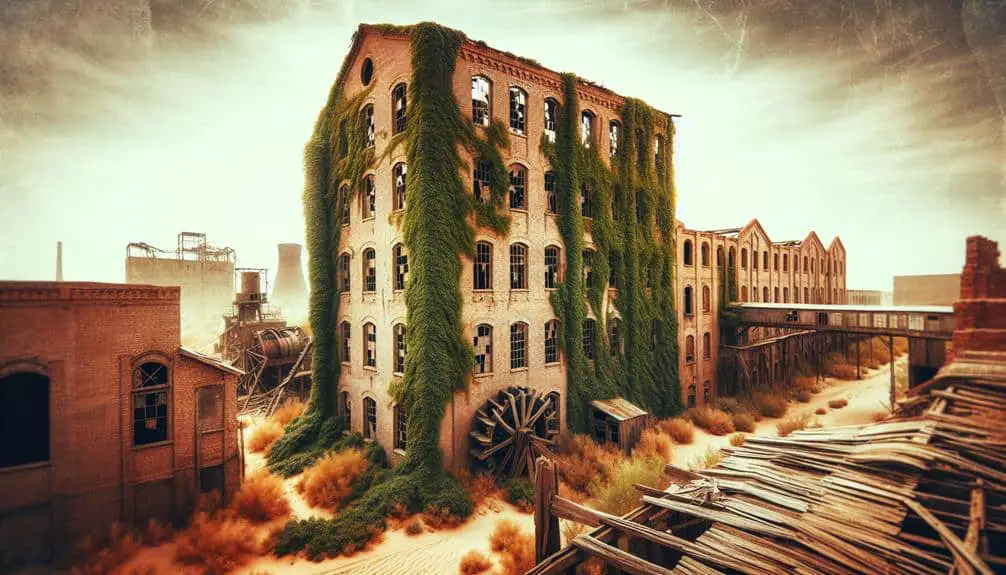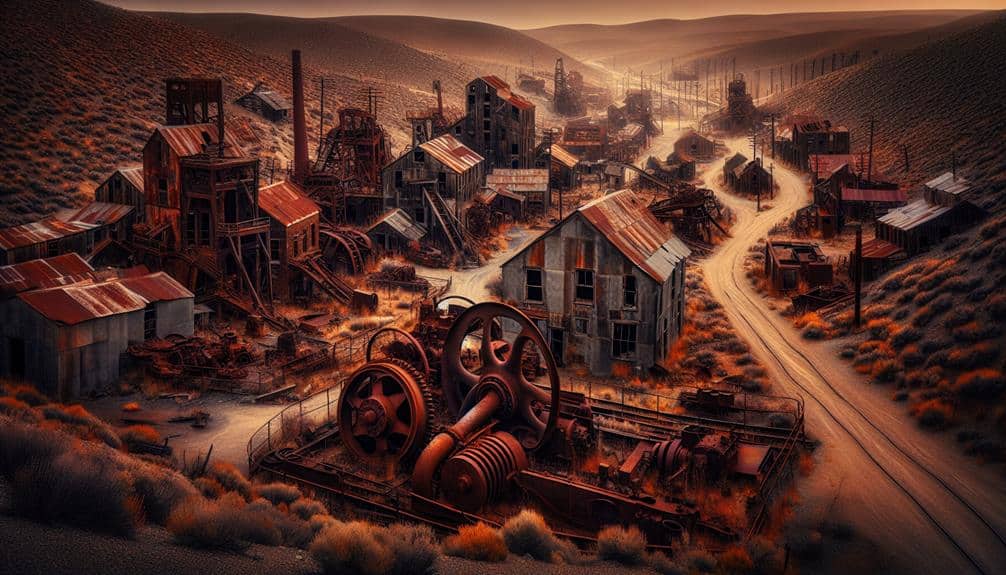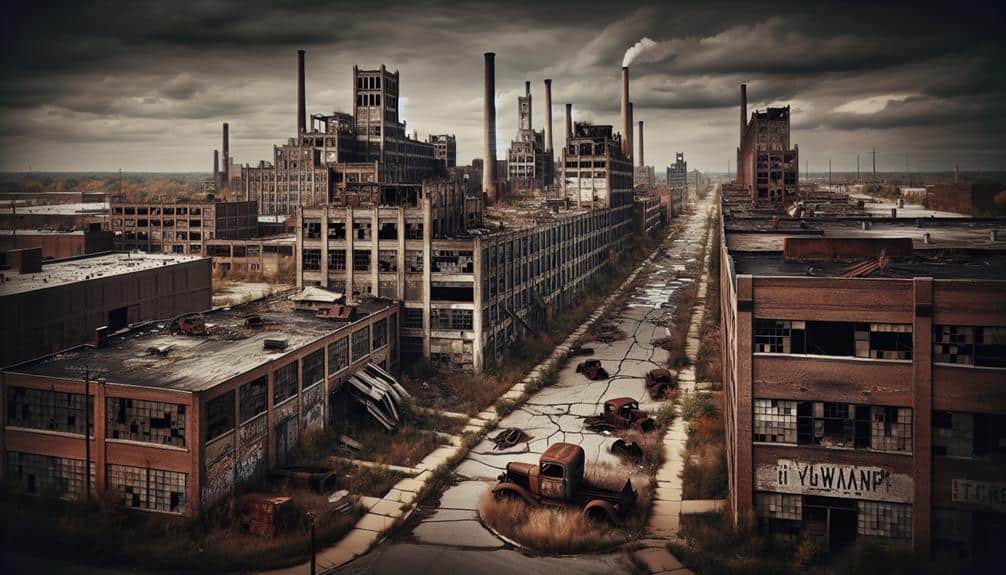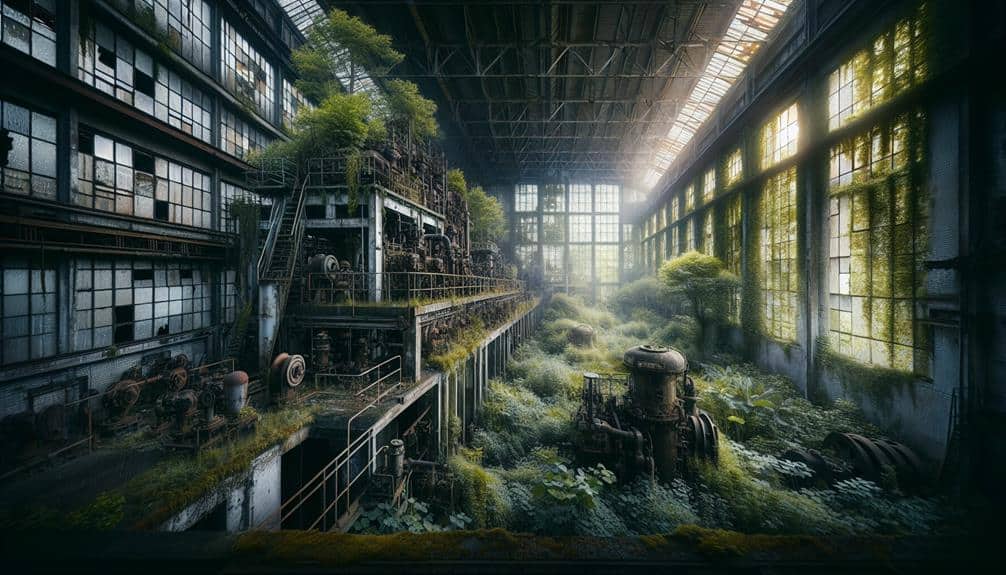To preserve the legacy of deserted mill towns, understand the impact of industrial decline and preservation challenges. Economic shifts forced closures, leading to abandonment. Discover historical insights through urban exploration of abandoned structures. Preservation efforts maintain significance, but limited funding poses challenges. These towns shape cultural identity, foster community cohesion, and offer economic potential. Future revitalization hinges on strategic planning and adaptive reuse, transforming deserted areas into vibrant communities. Embrace the mix of historical charm and modern amenities for successful preservation. Explore the history, challenges, and potential of deserted mill towns for a deeper appreciation of their legacy.
Key Points
- Adaptive reuse projects repurpose old mill buildings for modern uses.
- Establishing historic districts and seeking landmark status for preservation.
- Limited funding challenges restoration efforts in deserted mill towns.
- Balancing modern amenities with historical character in revitalization projects.
- Preservation strategies maintain the historical significance of deserted mill towns.
History of Deserted Mill Towns
The rise and decline of deserted mill towns across the United States reveal a complex interplay of industrialization, economic shifts, and societal changes. Industrial decline played a significant role in the abandonment of these towns, as technological advancements and globalization led to the closure of many mills, leaving communities without their primary source of employment. This economic upheaval forced residents to seek opportunities elsewhere, resulting in the gradual decline of these once-thriving settlements.
Urban exploration has brought attention to these deserted mill towns, attracting photographers, historians, and adventurers keen on uncovering the past hidden within their decaying structures. Through their exploration, these individuals document the remnants of a bygone era, shedding light on the impact of industrial decline on these communities. The abandoned factories, homes, and businesses stand as silent witnesses to the economic forces that shaped their fate, offering a glimpse into a time when these towns were bustling hubs of activity.
Factors Leading to Abandonment
Amidst the remnants of deserted mill towns lie a myriad of interconnected factors that ultimately led to their abandonment. Economic decline played a significant role in the demise of these once-thriving communities. As industries shifted and markets changed, many mills struggled to remain profitable, leading to layoffs and closures. This economic instability resulted in a ripple effect, impacting the local economy and causing residents to seek opportunities elsewhere.
Furthermore, environmental degradation also contributed to the abandonment of mill towns. The pollution caused by industrial activities not only harmed the health of residents but also damaged the surrounding ecosystem. As environmental regulations became stricter, many mills found it challenging to comply with the new standards, leading to closures and abandonment.
The combination of economic decline and environmental degradation created a challenging environment for deserted mill towns to survive. Understanding these factors is essential in preserving the legacy of these communities and learning from the past to build a more sustainable future.
Preservation Efforts and Challenges
Despite facing numerous obstacles, preservation efforts for deserted mill towns have encountered both successes and challenges that require strategic planning and community involvement. Preservation strategies play an essential role in maintaining the historical significance of these towns. Implementing adaptive reuse projects, such as converting old mill buildings into community centers or museums, has been a successful approach in some cases. Additionally, establishing historic districts and seeking landmark status for significant structures can provide important legal protection against demolition.
However, challenges persist in the preservation of deserted mill towns. Limited funding often hinders restoration projects, making it vital to secure financial support from government grants, private donors, or partnerships with preservation organizations. Balancing the need for modern amenities while preserving the town's historical character also poses a significant challenge. Furthermore, gaining community involvement is crucial for the success of preservation efforts. Engaging local residents in decision-making processes and raising awareness about the town's heritage can foster a sense of ownership and pride, ensuring the long-term sustainability of preservation initiatives.
Impact of Mill Towns on Communities
Preservation efforts for deserted mill towns have a profound impact on surrounding communities, shaping their cultural identity and economic development. These towns, once vibrant hubs of industry, hold a significant place in the collective memory of residents, fostering community cohesion through shared history. The preservation of mill towns often serves as a reminder of the community's resilience in the face of economic challenges.
Economically, the impact of deserted mill towns on communities can be multifaceted. While the closure of mills may have initially caused a downturn, efforts to preserve these sites can lead to revitalization projects that attract tourism and new businesses. This revitalization can inject much-needed funds into the local economy, creating jobs and boosting property values.
Future of Deserted Mill Towns
The evolution of abandoned mill towns hinges on strategic planning and adaptive reuse initiatives to ensure their sustainable future. Revitalization projects play a pivotal role in transforming these deserted areas into thriving communities once again. By repurposing old mill buildings into mixed-use spaces that encompass residential, commercial, and recreational facilities, these towns can attract new residents and businesses, breathing life back into their abandoned streets.
Moreover, economic opportunities arise from the restoration of deserted mill towns. As these areas become redeveloped, they create jobs, stimulate local businesses, and generate revenue for the community. The historical significance of these towns can also be preserved through adaptive reuse, allowing future generations to appreciate the heritage while enjoying modern amenities.
Frequently Asked Questions
What Are Some Common Myths or Misconceptions About Deserted Mill Towns?
Common misconceptions about deserted mill towns often revolve around haunted tales and economic impact. Yet, these places hold historical significance and architectural wonders that challenge local perceptions. Explore beyond the myths to uncover their true legacy.
How Do Local Communities Feel About the Preservation Efforts for Deserted Mill Towns?
Local communities hold varied perspectives on restoration challenges. Some embrace efforts, seeing historical value. Others express concerns about resources and changing town dynamics. Understanding these views is essential for successful preservation endeavors.
Are There Any Ghost Stories or Paranormal Activities Associated With These Abandoned Mill Towns?
Contrary to the skepticism surrounding ghost stories, paranormal investigations have revealed intriguing findings in deserted mill towns. Eerie sightings, unexplained sounds, and mysterious shadows add a layer of mystique to these abandoned places.
What Role Did the Mill Towns Play in the Economic Development of the Surrounding Areas?
Mill towns were crucial to economic development, serving as hubs for industry and commerce. Their historical significance lies in shaping local economies, providing jobs, and fostering communities. The impact of these towns reverberates through time.
What Are Some Unique Architectural Features or Design Elements Found in Deserted Mill Towns?
Explore deserted mill towns to discover unique architectural features like intricate brickwork, towering smokestacks, and industrial-style buildings. Appreciate the historical significance and cultural heritage preserved in these structures, showcasing the craftsmanship of a bygone era.



